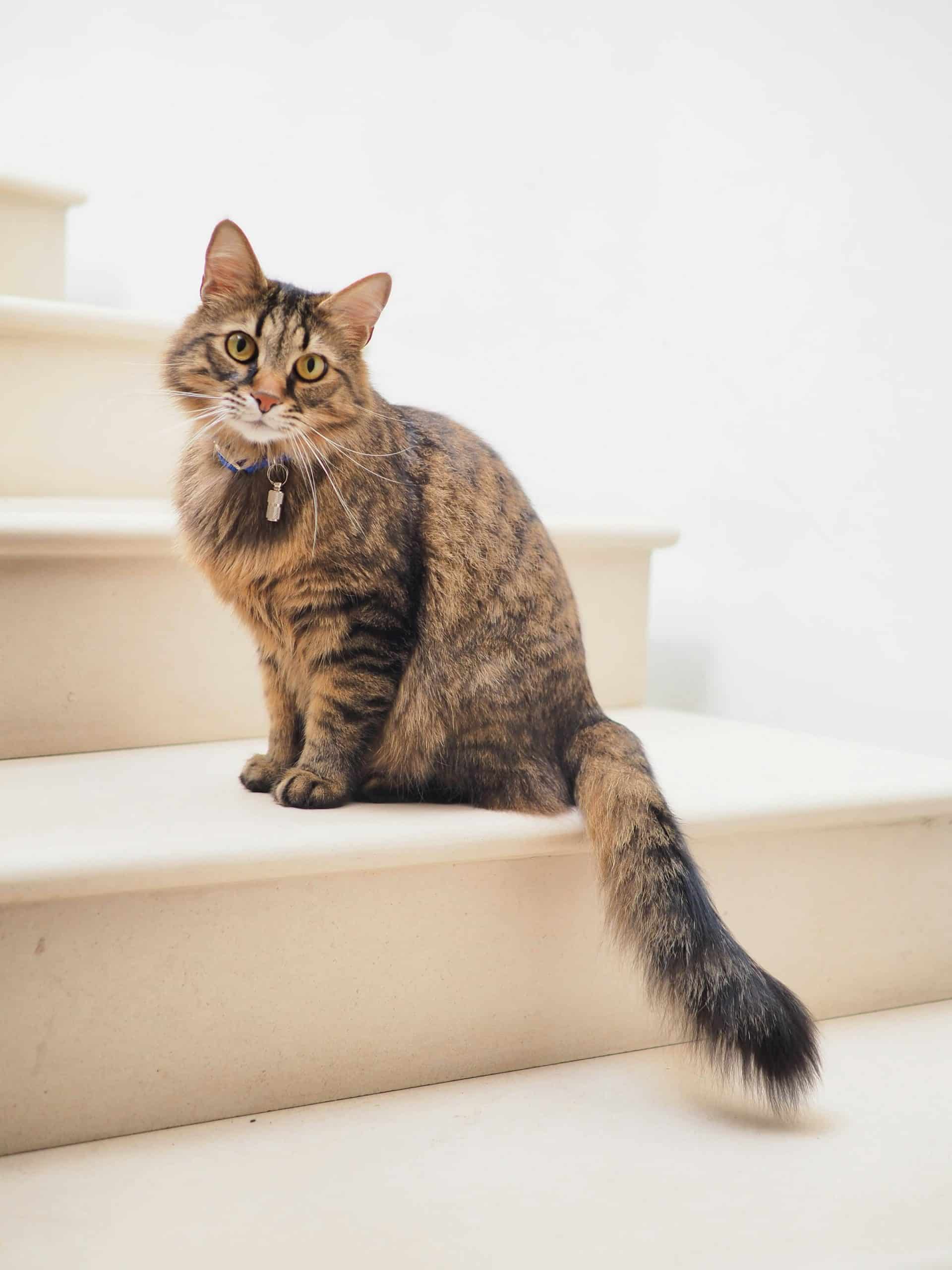When we welcome a long-haired cat into our homes, we not only open our hearts to their endearing personalities, but also to a world of care and grooming requirements that are unique to their luscious coats. One such challenge is matting, a pesky, often painful problem that can cause severe discomfort for your furry friend.
This article will elucidate some of the most effective methods of preventing matting in long-haired cats. Armed with this knowledge, you will be well-equipped to keep your pet’s fur sleek, shiny and most importantly, mat-free!
Lire également : What Are the Best Strategies for Weaning Puppies onto a Solid Diet?
Understanding Cat Matting
Let’s begin by understanding what matting is. Cats, especially those with long hair, are susceptible to mats, which are dense, tangled clumps of fur. Matting can develop when the cat’s fur becomes knotted and intertwined, creating dense, tightly knotted patches that can pull on the skin and cause discomfort or even pain.
What causes matting? There are several factors. The length and texture of your cat’s fur play a significant role. Cats with long, soft fur are more prone to matting. Additionally, overweight or older cats may struggle to groom certain areas of their bodies, leading to mats. Changes in season or humidity can also affect your cat’s coat and promote matting.
A voir aussi : How to Choose the Right Bird Seed Mix for a Winter Feeder to Attract Wild Birds?
The Importance of Regular Grooming
Regular grooming is your first line of defense against matting. Don’t be fooled into thinking that grooming only refers to brushing. It’s a more comprehensive term that includes brushing, combing, bathing, and even diet.
For long-haired cats, grooming should be a daily activity. Use a metal comb designed for long-haired cats and run it gently through your cat’s fur, making sure to reach all areas. This will remove loose hair, dirt, and prevent the formation of mats. Remember, the comb is your ally in the war against matting.
Bathing your cat occasionally can also help prevent mats, as it keeps the skin and fur clean and reduces the amount of loose hair. Always use cat-friendly shampoos and conditioners that maintain the natural oils in your cat’s coat.
And let’s not forget diet. A healthy diet contributes to a healthy coat. Feed your cat a balanced diet that includes essential fatty acids, which will help maintain a shiny, mat-resistant coat.
The Use of Mat-Specific Tools
For cat owners dealing with a more severe matting situation, there are tools specifically designed to tackle mats. These include mat rakes, mat breakers, or mat combs. These tools, when used correctly, can effectively cut through the mat without pulling on your cat’s skin.
While using these tools, it’s essential to be gentle and patient. Some mats may require several grooming sessions to be entirely removed. Always ensure that you are not hurting your cat in the process. If a mat is too close to the skin or if it’s causing your cat discomfort, it may be best to seek professional help.
Remember, these tools are not a replacement for regular grooming with a comb, but rather a supplement for tackling particularly stubborn mats.
Professional Grooming Services
Sometimes, despite your best effort, you may find that your cat’s coat continues to develop mats. In such cases, it might be worth considering a professional grooming service.
Professional groomers are experienced in handling all types of coats and can skillfully remove mats without causing distress or injury to your cat. They also have access to specialized tools and products that can help prevent future matting.
While this service comes at a cost, the comfort and well-being of your pet can make it a worthy investment. However, resorting to professional grooming services should not diminish the importance of home grooming. Regular brushing and combing at home are still crucial in preventing new mats from forming.
Mat Prevention is a Lifestyle
Preventing mats in long-haired cats isn’t merely about grooming. It’s a lifestyle that requires regular attention and care.
In addition to the methods mentioned above, there are other practical steps you can take. Regularly check for mats, especially in hard-to-reach areas. Pay attention to your cat’s behavior. If they are excessively licking a certain area, it could indicate a mat.
Act fast when you find a mat. The longer a mat stays, the larger it will get and the more discomfort it will cause. Small mats can often be gently teased apart with your fingers but remember to be extremely careful not to hurt your pet.
Matting can also be a sign of health issues, so if you notice a sudden increase in mats, it might be worth consulting your veterinarian.
In summary, preventing matting in long-haired cats requires patience, regular grooming, the right tools, professional help when required, and lots of love and attention from you. Remember, the goal isn’t just a mat-free coat, but a happy, comfortable pet.
Brush or Comb Every Day
One thing you cannot escape from when you have a long-haired cat is the necessity of daily brushing or combing. While it may seem like a lot, performing this task on a daily basis can significantly decrease the incidence of matted fur on your feline friend.
Start by getting a good-quality comb or brush made specifically for long-haired cats. These grooming tools are designed to penetrate the thick layers of your cat’s coat to remove loose hairs and prevent mats from forming.
When brushing, you should ensure that the brush reaches all the way down to your cat’s skin. Doing this can help in loosening any hairs near the skin that may be starting to form a mat. It’s also important to focus on areas where matting is common, such as behind the ears, under the legs, and near the rear end. For cats that are not fond of being brushed or combed, it’s advisable to start with short sessions and gradually increase as they become more accustomed to the grooming routine.
While brushing helps to prevent matted fur, it also provides a bonding opportunity for you and your cat. Plus, regular grooming gives you a chance to check for fleas, ticks or any skin abnormalities that may need medical attention.
Remember, prevention is better than cure, so making daily brushing or combing a habit can save your long-haired cat from the discomfort and pain associated with matted fur.
Short Haircuts and Regular Trimming
While it might seem counterintuitive to cut a long-haired cat’s fur, regular haircuts and trims can be beneficial in preventing matting.
Short haircuts, such as a lion cut, can be a practical solution for cats that struggle with chronic matting. This type of cut involves shaving the cat’s body, leaving hair on the head, neck, legs, and tail-tip. It can significantly reduce grooming time and prevent the formation of mats. However, it’s important to remember that a lion cut should be done by a professional groomer.
Even if you decide against a full haircut, regular trimming can help in preventing matting. Trimming the hair around the areas that are prone to matting can help to manage and prevent the formation of mats.
For first-time cat owners, it’s advisable to get professional help for haircuts and trimmings. However, with practice and the right tools, you can learn how to maintain your cat’s coat at home.
Keep in mind that while haircuts and trimming can help, they should not replace daily brushing or combing. These are complementary preventive measures that work best when combined with regular grooming.
Conclusion
In conclusion, preventing matting in long-haired cats is a task that requires time, effort, and commitment. However, it’s a small price to pay for the comfort and health of your feline friend. By implementing a daily grooming routine, using mat-specific tools when necessary, considering professional grooming services, and perhaps even opting for a haircut or regular trimming, you can keep your cat’s coat sleek, shiny, and most importantly, mat-free!
Remember, a mat-free cat is a happier and more comfortable cat. So, commit to the grooming and care practices necessary to prevent matting and ensure your cat’s comfort and wellbeing. After all, our pets depend on us for their care, and a well-groomed cat is a clear sign of a responsible and loving pet owner.











